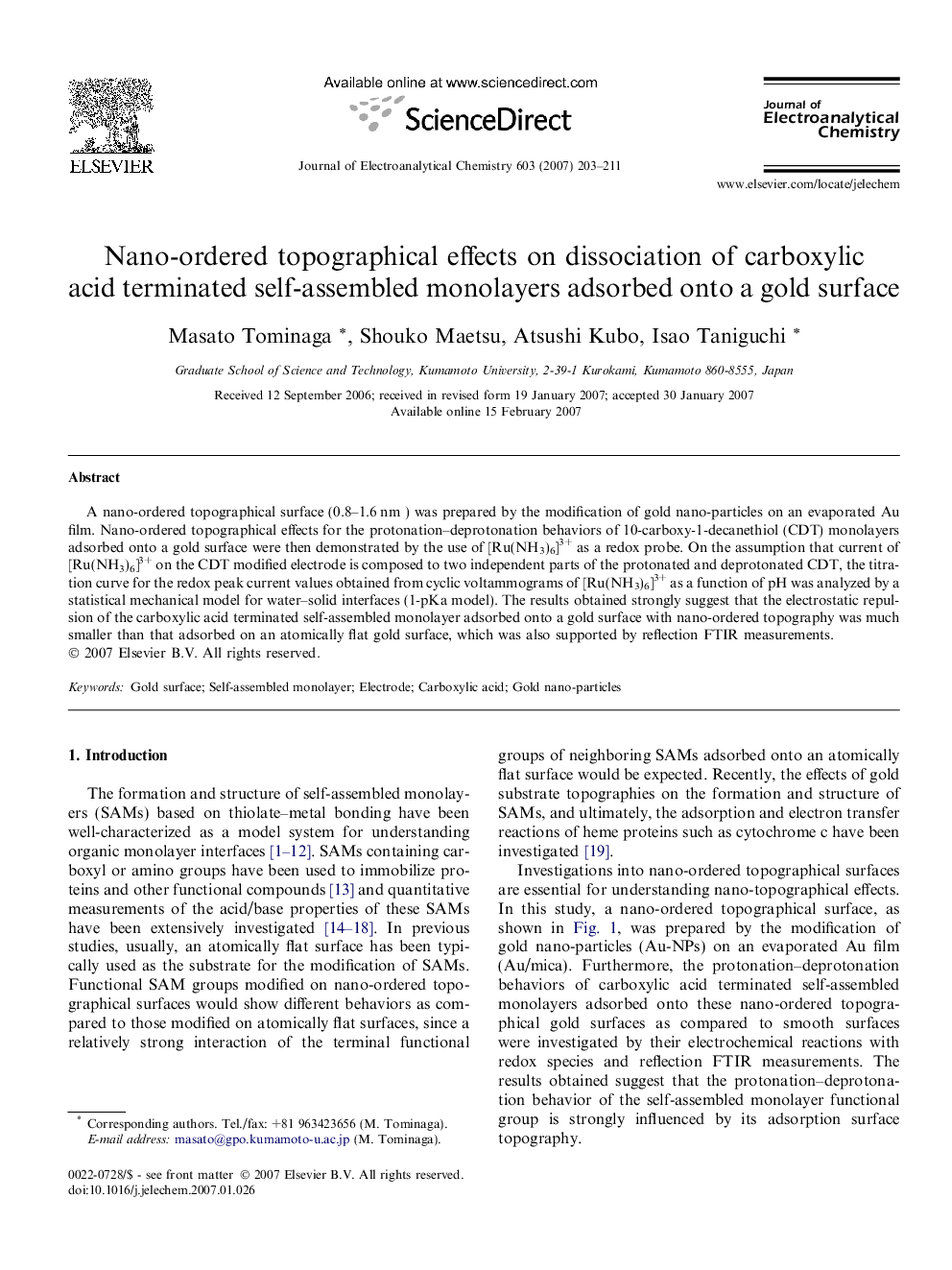| Article ID | Journal | Published Year | Pages | File Type |
|---|---|---|---|---|
| 220851 | Journal of Electroanalytical Chemistry | 2007 | 9 Pages |
A nano-ordered topographical surface (0.8–1.6 nm ) was prepared by the modification of gold nano-particles on an evaporated Au film. Nano-ordered topographical effects for the protonation–deprotonation behaviors of 10-carboxy-1-decanethiol (CDT) monolayers adsorbed onto a gold surface were then demonstrated by the use of [Ru(NH3)6]3+ as a redox probe. On the assumption that current of [Ru(NH3)6]3+ on the CDT modified electrode is composed to two independent parts of the protonated and deprotonated CDT, the titration curve for the redox peak current values obtained from cyclic voltammograms of [Ru(NH3)6]3+ as a function of pH was analyzed by a statistical mechanical model for water–solid interfaces (1-pKa model). The results obtained strongly suggest that the electrostatic repulsion of the carboxylic acid terminated self-assembled monolayer adsorbed onto a gold surface with nano-ordered topography was much smaller than that adsorbed on an atomically flat gold surface, which was also supported by reflection FTIR measurements.
